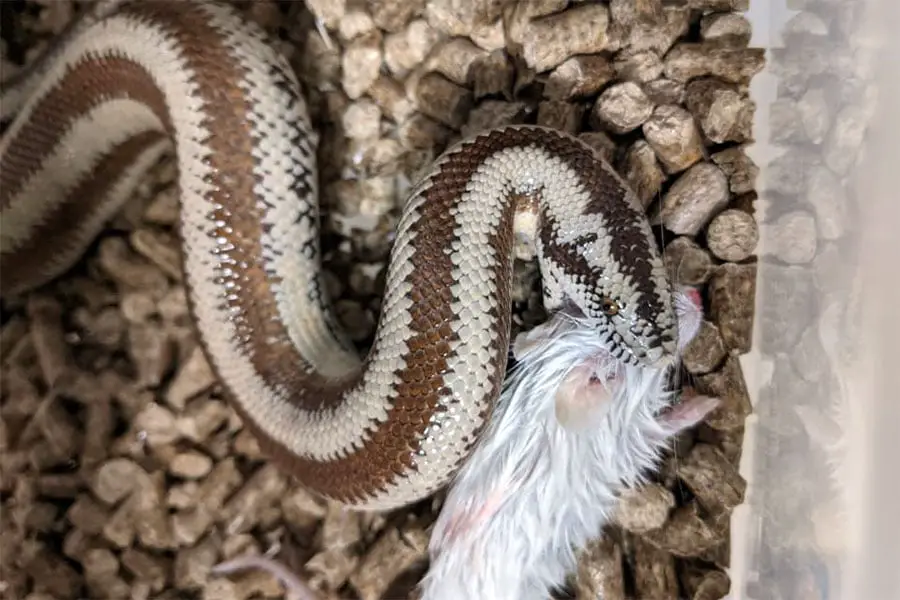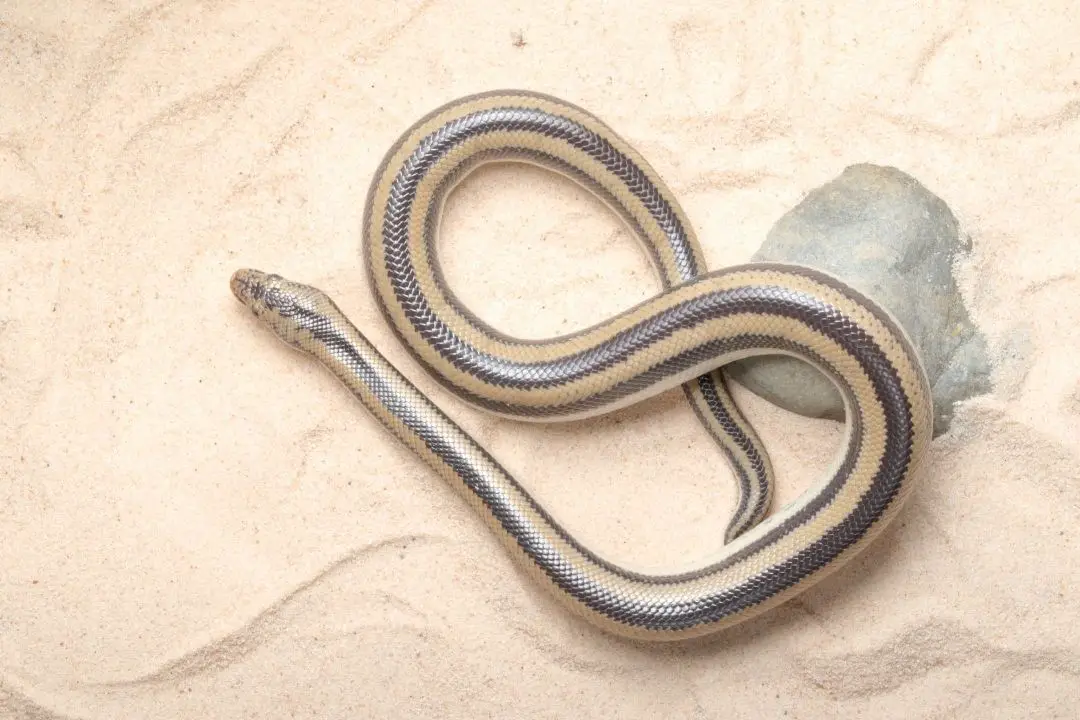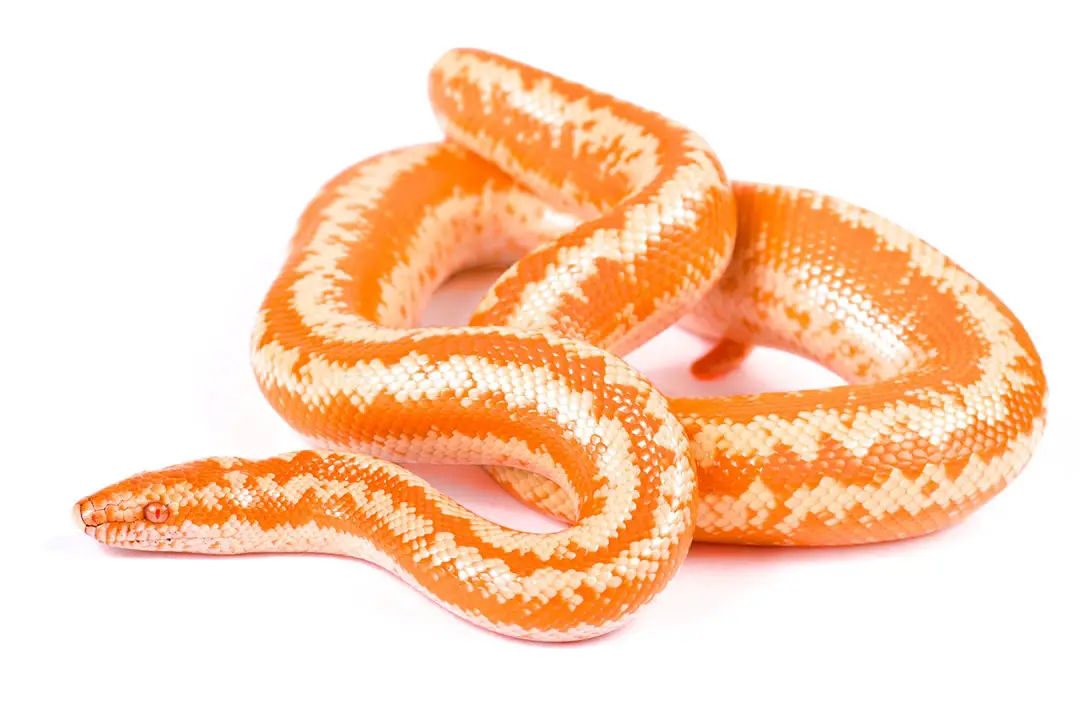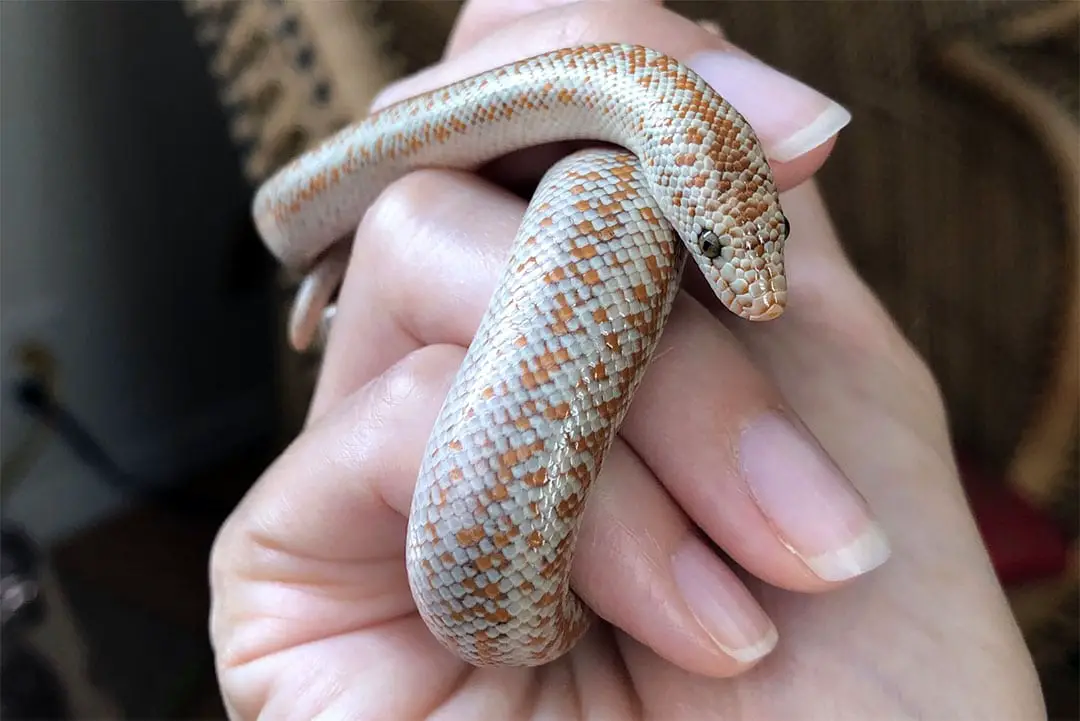The rosy boa (Charina trivirgata or Lichanura trivirgata) is one of only two boa species native to North America. These small snakes are native to northern Mexico and the American Southwest.
They are somewhat popular pets thanks to their small size and docile nature.
They can be difficult to get to eat, so this list will give you some common reasons why your rosy boa may refuse to eat.
1. Stress
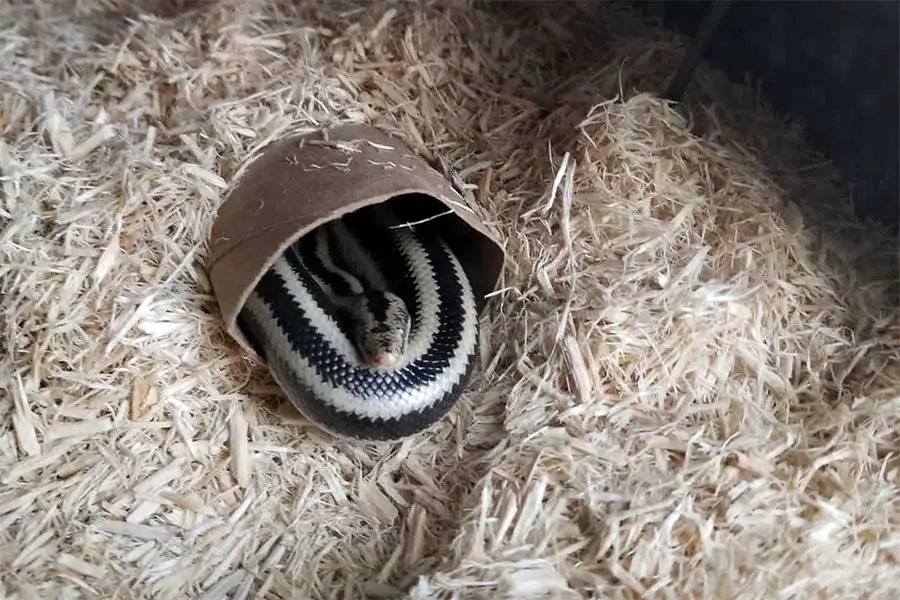
Stress is probably the single most common reason why a rosy boa may refuse to eat. They are incredibly shy snakes. If your snake doesn’t feel safe, it may refuse to eat.
Shipping, a new home, changes, and too much handling can all stress out your pet. When you first get your new rosy boa, put it in its enclosure and give it a minimum of a week without being bothered at all.
Your snake needs to explore and become comfortable before it will be willing to eat. Make sure you have plenty of hides. If your enclosure is glass, be sure to cover three sides of it with background paper to help the snake feel more hidden.
Changes in your home like moving or new animals can also stress out your snake. Keep the enclosure in a room that isn’t used often, and keep pets like dogs and cats out.
If you have been handling your snake often, leave it alone to relax for at least a week. Only enter the enclosure for cleaning and filling the water dish.
2. Bad Conditions
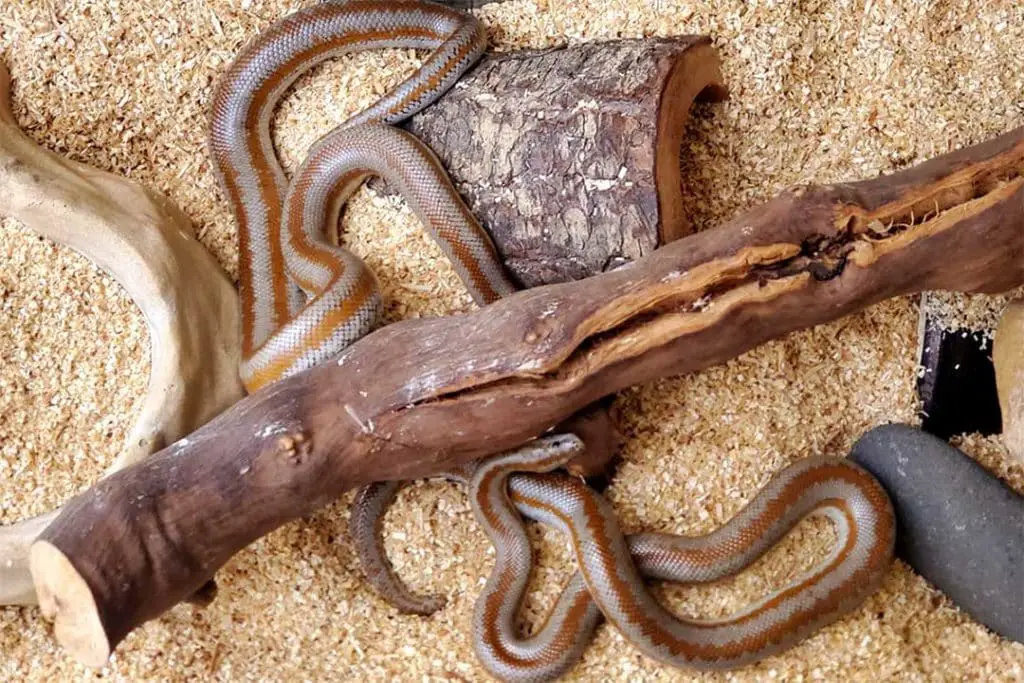
Rosy boas go on feeding strikes if they are too cold. Even if your temperatures were fine before, keep an eye on them. Your heat source may be getting old and not heating up, or your thermometer could be reading improperly.
The ambient air temperature in the room could also be lowering the temperatures in the enclosure. Check each side, the hides, and the basking spots with a temperature gun.
Watch where your snake is staying. If it is always on the heat, the enclosure is too cold. If it is always on the cool side, lower the temperatures.
Too much heat can also stress a rosy boa to the point it will go on a feeding strike. Check the humidity levels, particularly if you see your snake in the water dish often.
I put together a complete rosy boa care sheet to setup the enclosure, feed and care for rosy boas.
3. Winter
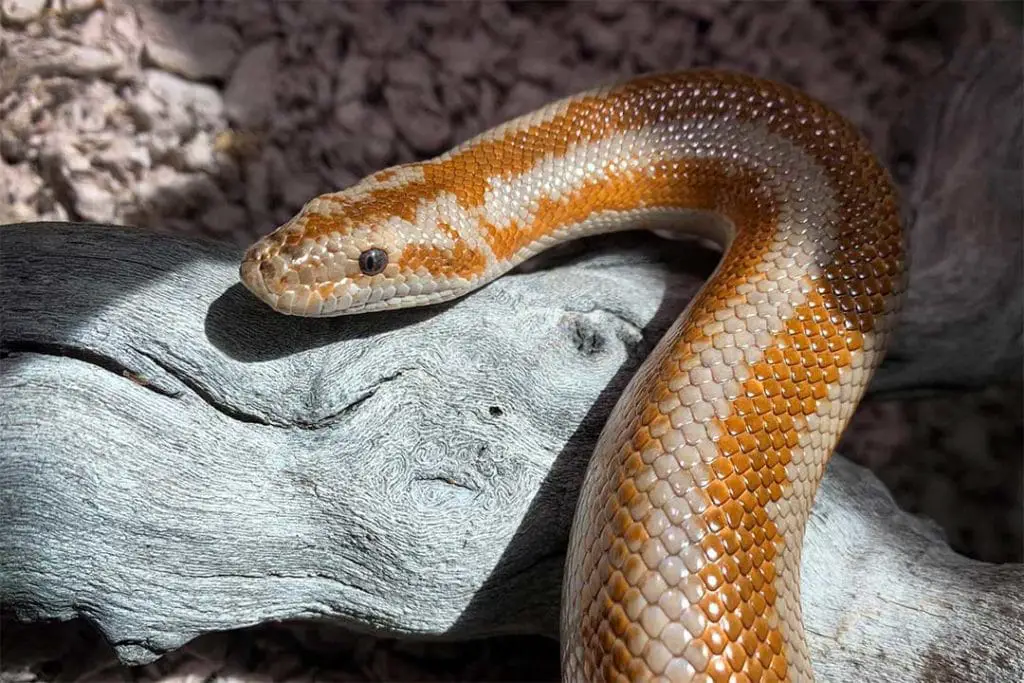
Rosy boas may be from more arid climates, but their natural habitat gets very cold in the winter. Most rosy boas will stop eating once the temperature drops in the wild and spend much of the winter asleep.
They will only wake up to drink water during this time. It isn’t unusual for a rosy boa in captivity to try to go into brumation, the proper name for this behavior in snakes. If the temperature drops, your snake may start preparing for winter.
Part of that is refusing to eat. Even if your snake isn’t going into brumation, it may still want to eat less often. Rosy boas can go for 3-4 months without eating easily.
4. Type of Prey
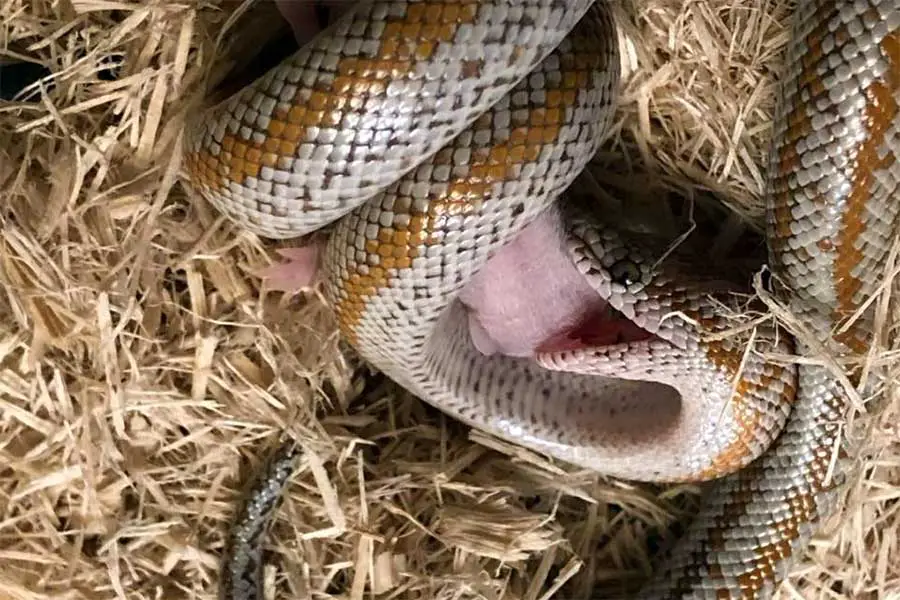
Rosy boas can be a bit picky with food. When you get a rosy boa from a breeder or the previous owner, be sure to ask what it was eating and the conditions it was kept in.
Some snakes will only eat live prey, while others may be confused or scared by moving prey. If you want to switch an animal over to frozen and thawed prey from live food, wait until your snake is eating regularly.
You can find plenty of tips online on how to make frozen prey more appealing. If your snake is eating larger mice, it is worth trying to get onto frozen prey so you don’t need to monitor each feeding.
This is good for shy animals that do not like to be watched. However, keeping your snake fed is much more important than anything else.
Some boas also prefer to stick with multiple small or young mice over larger adults. If your snake has been on a feeding strike, try offering smaller prey items if it is on larger prey.
5. Feeding Location

Rosy boas do not like being moved to be fed. If you notice your snake prefers to eat on its own time, placing the prey in an enclosed hide or a cup can help.
Leaving the snake in the dark may also make it more willing to feed. Some owners swear by covering the enclosure with a towel for mealtimes.
Others will place prey in a cardboard box with a hole cut in and place this in the enclosure. The snake can then grab the prey when it feels ready to eat.
This is best with frozen prey or with live fuzzies. Do not try this with older live prey since you need to make sure the prey doesn’t hurt your snake.
If you are worried about your snake ingesting the substrate, use the box method or a deli cup to offer prey to your snake.
6. Illness
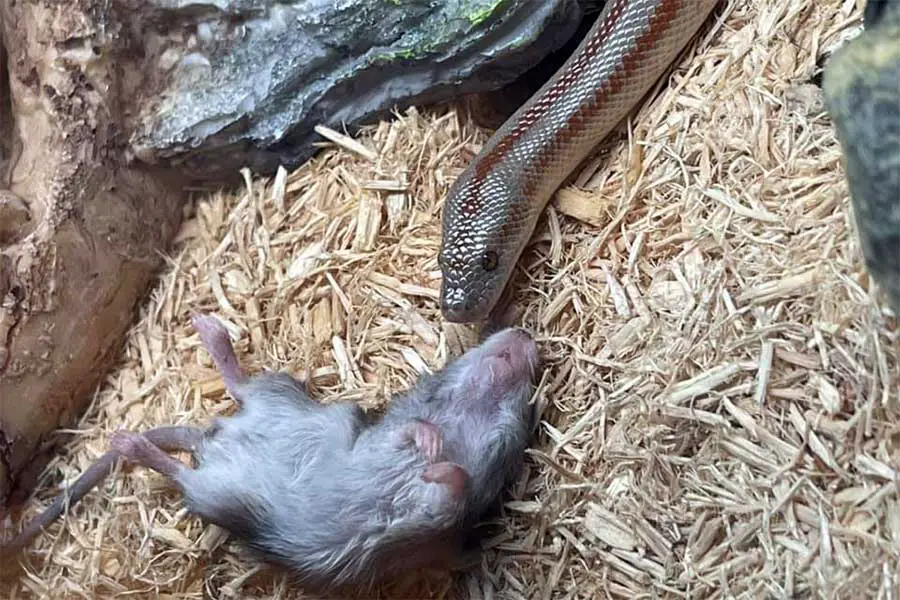
Many illnesses in snakes have a loss of appetite as a symptom. If your snake suddenly stops eating, pay close attention to its health. Any changes in the skin, breathing, or other behavior will mean a quick trip to your vet.
Impactions from the ingested substrate will also make your snake lose its appetite.
It is always a good idea to have your snake checked out. Rosy boas are very good at hiding illness, so you need to be cautious. By the time you see more obvious symptoms, your pet could be very sick.
Conclusion
Rosy boas can be picky about feeding, particularly when you first get your snake. Be patient and keep a close eye on your pet.
So long as it isn’t losing a lot of weight, your snake can handle some time without food. Just watch out for signs of illness. If you have any questions or suggestions on feeding reluctant rosy boas, please leave a comment below.
